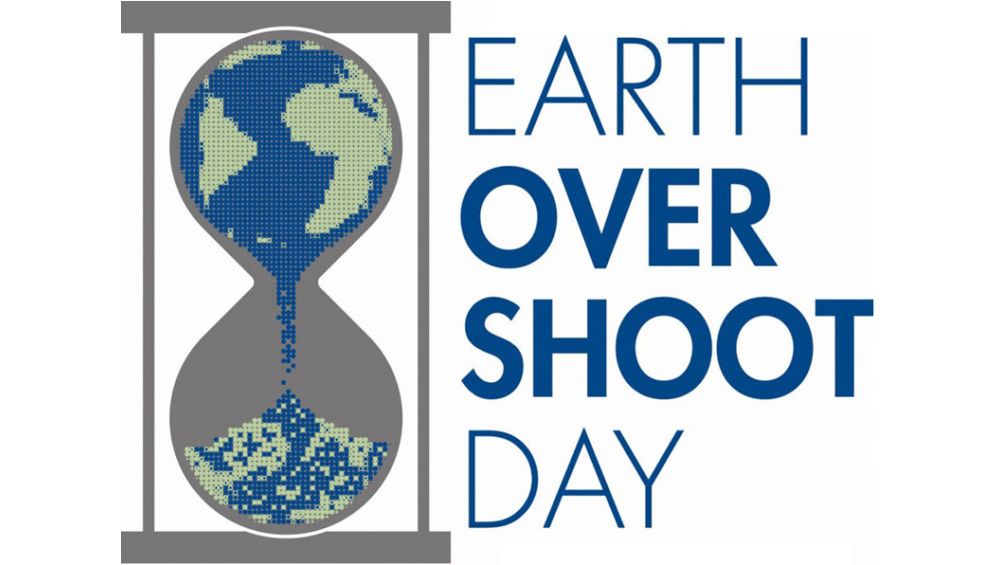Every year, humanity reaches the Earth Overshoot Day, earlier. This day marks that from then on humanity’s demand on nature exceeds what the natural ecosystems can renew in a year. In 2020 this will not be the case for the first time since long ago as the corona pandemic has paralysed the world for weeks and put it into a state of emergency. In 2019, the Earth Overshoot Day was on 29 July while in 2020 it is reached on 22 August. However, estimates suggest that without the corona crisis we would have reached that day already on 3 May. What is certain and obvious is that the world’s natural resources, on which we humans depend, are dwindling rapidly. This is not a surprise when considering that especially the global North has developed into a throwaway society in which ever greater quantities of waste are produced, resulting in the complete loss of raw materials. The World Bank estimates that by 2050, even 70 percent more waste will be produced than today in case we do business as usual. Yet solutions for change are not that difficult to find and there are already concepts available that demonstrate how things can work much better for us and future generations.
Waste is only a valuable raw material in the wrong place

As so often, nature itself shows us the perfect solution. In nature there is no waste. All materials are part of a cycle – the waste of one organism becomes the food of another. In other words: waste is just a valuable raw material in the wrong place. This natural cycle is the role model of the so-called “circular economy”. It’s aim is to make waste valuable so that no raw material gets lost, but rather fulfils a benefit in another form. This can be explained relatively simply using the example of compostable packaging. Such a packaging product can be returned to the soil and thus serves as food for plants again. In order to achieve this, the circular economy includes the entire production and utilisation process. Products are understood as carriers of nutrients and raw materials, whose basic materials can be used again and again. This starts already with the design. Hence, products are developed exclusively with reusable materials, for instance with recyclable or high-quality materials that can be used in the manufacture of a new product after the end of its original useful life. Efficient manufacturing and processing techniques are also important, for example by using wastewater or waste heat. Besides, circular economy focuses on extending the life of products, for example by sharing, repairing, reuse or conversion. And finally, it is about recycling, which means recovering the basic materials from used products and using them again or producing new ones from it. Instead of the throw-away society, circular economy wants to provide a “return society”. Products are to be designed in such a way that they can be returned to the manufacturer and that he is able to produce a durable new product from the individual parts.
Cradle to Cradle – From origin to origin
At the end of the 1990s, the German chemist Michael Braungart and the US-American architect William McDonough developed the Cradle to Cradle system, which can be understood as an approach for a consistent circular economy. Based on this philosophy, the Cradle to Cradle association (C2C) was founded in Germany. The non-profit association has set itself the task of lobbying for the recycling industry, for example through the regularly held international “Cradle to Cradle Congress” or the “C2C Academy”. SEKEM supports the activities of the association in various ways, for example as a member of the advisory board or by participating in events. On September 3rd, SEKEM’s CEO Helmy Abouleish will hold a live-talk with C2C managing director Tim Janßen on the topic of circular economy.
For SEKEM, the promotion of a circular economy is a key topic for a sustainable future. Therefore, one of SEKEM’s vision goals for 2057 is to restructure all internal activities in the spirit of the circular economy and to familiarise as many other companies in Egypt as possible with this holistic approach. The “C2C certification”, which provides information about the extent to which the requirements of a circular economy are fulfilled by products and companies, is a helpful tool in this context. The following five main criteria are evaluated: Material health, recyclability, use of renewable energies, responsible use of water and social justice. SEKEM aims to have all production processes and activities C2C certified by 2057.
Live-talk about circular economy by Helmy Abouleish and Tim Janßen (in German)
Cradle to Cradle Association

